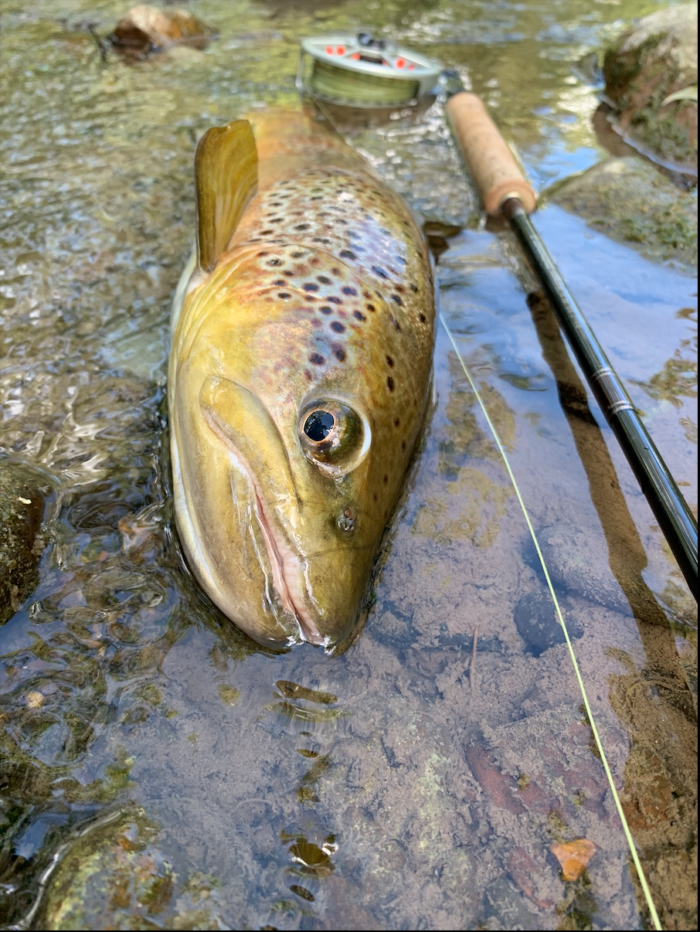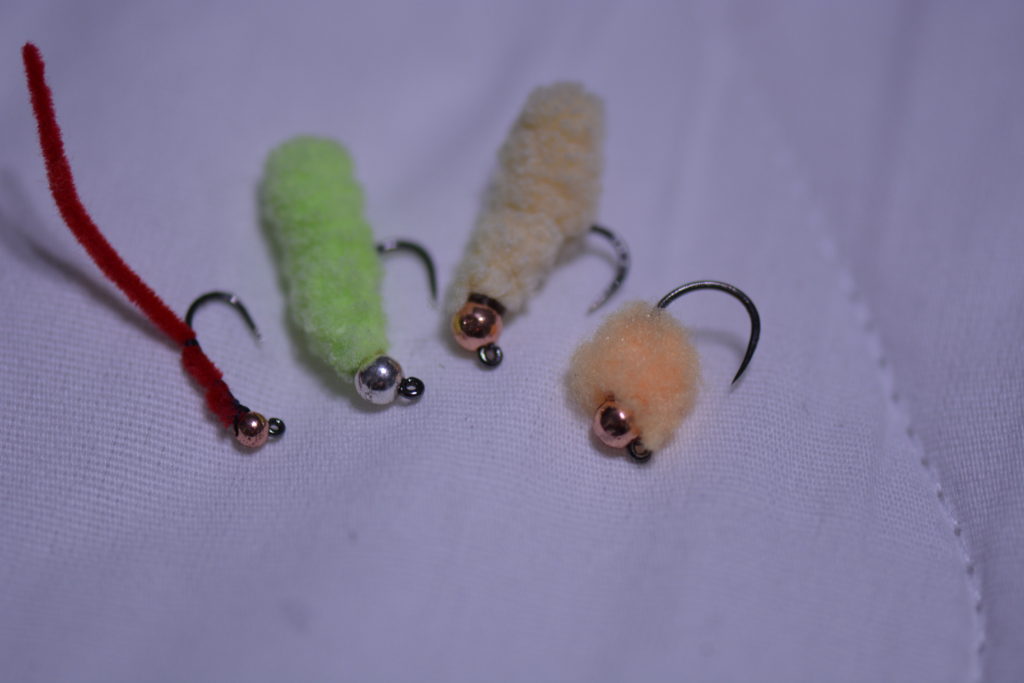
3 Tactics for Low Water Trout
Here in PA we have had a pretty brutal summer that’s been hard on a lot of our streams. Low water and high temps have been confining most of my fishing to mornings and evenings on just a few local creeks. However, just when I was beginning to think it would be in the nineties forever, the daytime temperatures have started slowly dropping.
It seems like fall is coming in quickly, and with it the return of fishable trout water. Though the streams might be cool enough to fish, it’s not looking like we’ll be getting much water to fill the banks up any time soon. Fishing super low water like this can be very frustrating, but can also be high if you fish it right. It can take every trick in the book to fool low water fish, so I figured I would go over three of my favorite tactics for these conditions.
1: The Shock and Awe
This is my favorite tactic for late summer and fall fishing. Many anglers turn to small, drab flies and finesse fishing when the water gets low, however the shock and awe is exactly the opposite. Simply stated, it is just fishing bright and gaudy flies on heavier tippets, and “shocking” the fish into biting. I usually use chartreuse mops, squirmy worms, weenies, and eggs on 4 to 5.5x tippets.

This works pretty much any time, but best on sunny days when the water is lower, but not quite drought level, and in the low to mid 60’s in temperature. I think this tactic works well for a few reasons. In summer and fall, the fish are used to seeing plenty of weird and brightly colored terrestrials fall into the water, like caterpillars and spiders. These provide a lot of calories, so the fish take the opportunity and eat them aggressively, especially when their metabolism is higher on warmer days.
Not only this, but in low water, the fish’s habitat is greatly reduced. They are forced to live closer together and compete more openly for food. When something big and bright passes by, they react quickly and at least test the fly to see if it is edible. I believe this is why the strikes you get when fishing this way are sometimes incredibly aggressive and hard.
The shock and awe is my go to low water tactic because it not only works well on a regular drift, but also works great for pulling fish from out of sticks and from under bushes on the bank. I have seen fish swim more than five feet out from under cover to eat a green mop. This is why I usually fish heavier tippets, so I can dap the fly right under the rod tip into tight spaces around heavy cover where a regular drift is not possible. If you decide to try it out, my go to rig is about 4 feet of 5x tippet and a 3.5mm beaded chartreuse jig mop, fished on a 10.5 foot rod.
2: The Single Fly Sighter Float
This tactic is closer to the usual approach of finesse fishing for spooky fish. On days when bright flies aren’t working, or when the water is just too low, I’ll switch to this. Sighter floating a single 1.5 to 2.5mm beaded fly on 6-7x tippet is about as tactical as you can go when the fish are spooky.
To do it right, you need a leader you can cast well with at least a foot and a half of sighter. If the fish are being extra skittish, you can even switch to a Cortland’s White sighter for an extra touch of finesse. To get good drifts, it’s imperative to use some type of floatant to grease up the entire leader, not just the sighter. This helps the sighter suspend the flies, and prevents the rest of the leader from sinking and pulling the sighter down with it. I use Loon Payette paste or red label Mucilin.
When rigging up, use as light a tippet as you can, and make it at least 1.25 times the depth of the water you’re fishing. If the water is deeper than the length of the tippet, the sighter will be pulled under on every drift right as the fly gets in the zone. My favorite flies for fishing this tactic in summer are black bodied flies with an orange tag and shaggy waltz worms. Both these flies could easily be taken as a subsurface insect, or as a terrestrial (I always think ants).

When floating the sighter, all you have to do is cast out and try to hold as much line as you can up to the sighter off the water. Once the fly anchors on the bottom, the sighter will slow slightly. Watch the sighter for any sign of drag, and for quick stops and changes in direction that may indicate a strike. Basically, fish the sighter the same as an indicator or dry and dropper. If the sighter starts singing too much or too early, just re-grease the leader.
One final note is that every now and then it is good to check your tippet to see if any floatant got stuck to it. Sometimes on less than perfect casts the tippet can brush the leader or sighter and pick up grease, which will slow the sink rate of the flies. If there is, just wipe it off and you’re good to go.
3: Single Dry
I saved the best tactic for last, because who doesn’t love seeing a fish sip a dry off the surface? When the water is low, fishing dries blindly near the banks and cover can be the most productive tactic of all. Fishing dries can be really hit or miss in low water. I find that it’s most consistent on warm and windy days.
I think dries work so well in these conditions because if the water is low and clear enough, eating off the top is basically the same as eating subsurface for the fish. Also, between the terrestrials falling in the water and whatever nymphs remain hatching throughout the summer, there will be plenty of bugs on the surface.
Though it can be high numbers, blind fishing a dry fly rarely produces larger fish for me in low water conditions. For this reason I usually fish 7-8x tippets for a better drift, because I rarely get fish that require anything heavier. I will usually just fish dries on my regular nymphing setup with about six feet of light tippet. If I know that dries are going to be the game for the day, I will rig up my nine foot three weight with a light taper line and dedicated nine to sixteen foot leader. My go to flies are a size 16 cdc ant or a size 18 to 20 shuttlecock. I like cdc for spooky fish because of its gentle landing and good movement on the water.

By fishing dries in drought conditions you can get longer, better drifts and stay further away from the fish than with a nymph. If the water is especially low or weedy, fishing on top also keeps the flies clear of snags and debris. They can be good in all sorts of low water conditions, and are the best bet overall for when the fish are incredibly spooky.
——
These are my three favorite and most productive ways to fish in low water. That being said, I do fish plenty of other flies and tactics based on the fish, waterway, and conditions. It all depends on what the fish want. So, give these tactics a try, and you might find a lot more success. If you want a hands on lesson to seriously up your game in tough conditions like low water, check out the guiding page and call to book a trip. I still have a few dates open for the rest of the summer and into the fall. Tight lines everyone!
Note: Always check your water temps before fishing. For all but a few streams, very low water also means very high temperatures. Fishing when the water is above 67 degrees can result in serious harm or death for trout. Fish responsibly!
